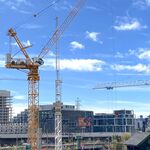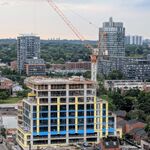How is building full subway for full subway costs and operating expenses when there is no where near full subway demand smart spending of limited resources?
Well the difference between underground light rail and underground heavy rail is very small.
Very small.
With that - very small - in mind, I do not see it as a waste of resources, but the better long term investment.
I look at it like this - oh no, we have 10000 dollars to throw away, but no, we can't throw away 10010 dollars for something better.
Changing landuse is not going to suddenly cause enough people to materialize to produce three times current projected ridership for 2030.
From the other topic...
[from laz's materials...]...the system’s first expansion period, between 1954 and 1956, 50% of highrises and 90% of offices were constructed within a five minute walk from the metro (Cervero, 1998: 83). Since 1965, for 20 years, subway ridership and the system’s expansion paralleled one another... [/flm]
So, I ask why not?
Lets jump down to another part...
[from laz's materials...]). The Tunnelbana was built in advance of demand, and therefore incurred huge operating deficits initially, but this would pay off as the new settlement pattern took form (Cervero, 1998: 113). The city owned much land in the fringes. This allowed for ongoing coordination of transit and fringe area development, unlike in Toronto (Cervero, 1998: 113).[/flm]
Were people in Toronto insane?
Were people in Stockholm insane?
I think not.
I think there is some logic to this. Or you think it's all bullocks?
These results speak for themselves...
-All these policies have led to a reduction in automobile dependency. The city actually experienced a reduction in auto use in the 1980s, while transit use increased. Transit use is at some of the highest levels in the world (Newman and Kenworthy, 1999: 208-209).-
So this leads me to conclude the cynical conclusion that the goal is to keep people driving. Thus, worse options are taken, and transit is not being integrated with land use. In fact it's fair to say that significant land use changes are not taken into consideration by planners.




